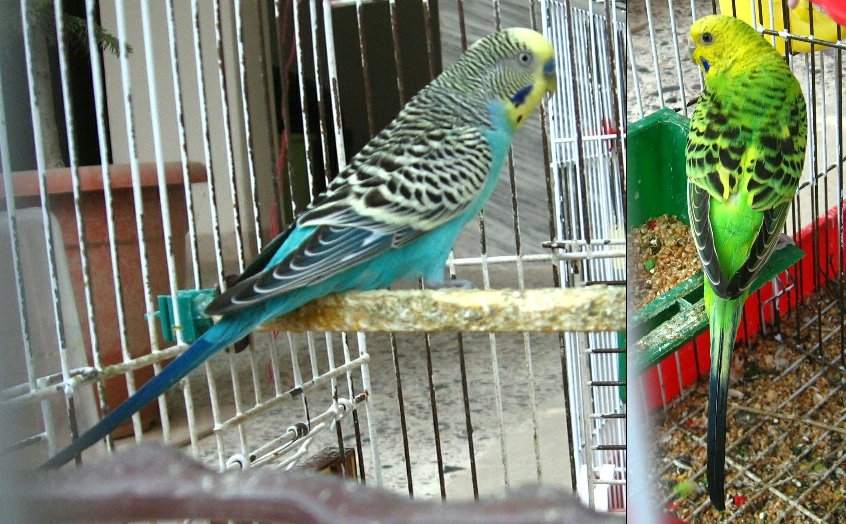

Melopsittacus undulatus
Budgerigars (also commonly called budgies or parakeets) are naturally distributed through most of Australia. They have also been introduced to Florida.
Budgerigars in their natural-habitats of Australia have a light green body color with pitch-black markings on their back and wing coverts. In captivity, they have been bred in many other colors like blue, grey, violet, white, and yellow.
These very social birds live in large groups. They prefer to eat seeds of grasses and crop plants. These seeds are very rich in nutrients and are equivalent in caloric contents to animal tissue. Thus, budgerigars need no other kind of food.
Like many other birds, budgerigars have tetrachromatic color vision (based on four kinds of color cone cells), but for all four classes of cone cells to operate simultaneously the full spectrum provided by sunlight is needed. Additionally, budgerigars have been known to see in the ultraviolet spectrum, which brightens up their feathers to attract mates.
Male budgerigars are considered one of the top five talking champions amongst parrot species, alongside with African Grey Parrots, some of the parrots of the Amazona genus, and others. A budgerigar named Puck holds the world record for the largest vocabulary of any bird, at 1,728 words. Puck, a male Budgerigar owned by American Camille Jordan, died in 1994, with the record first appearing in the 1995 edition of Guinness World Records.
The above picture was taken in the town of Edessa, Greece, in August 2008.
Genus Melopsittacus
Tribe Melopsittacini
Subfamily Platycercinae
Family Psittacidae
Order Psittaciformes
Class Aves
Subphylum Vertebrata
Phylum Chordata
Kingdom Animalia
Life on Earth
Index